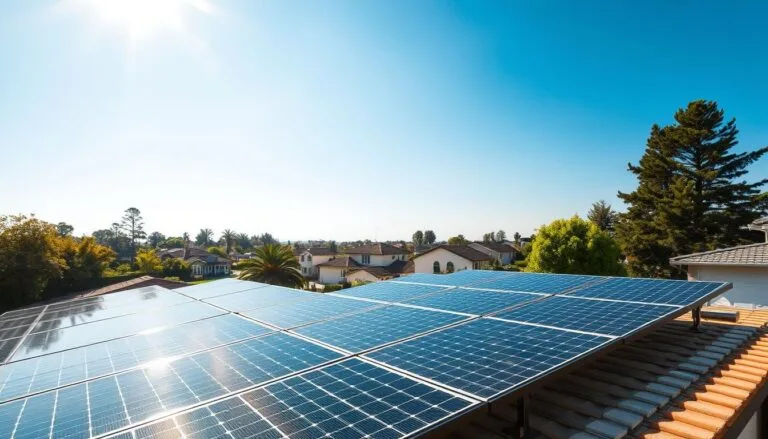Reliable power is the backbone of modern life. Renewable energy sources such as solar and wind vary with weather and time of day, so capturing output for later use is vital to keep electricity available when people need it most.
Battery Energy Storage Systems (BESS) are scaling rapidly: growing deployments and expanded manufacturing are driving down capital costs, improving round‑trip efficiency, and strengthening safety and recyclability. Recent U.S. projects and federal incentives (including provisions in the Inflation Reduction Act) are accelerating domestic manufacturing and recyclable design pathways, helping make clean energy more affordable and practical nationwide.
From rooftop systems to utility containers, smart storage systems convert intermittent generation into on‑demand supply. That expands capacity for renewable energy, creates jobs in manufacturing, installation, and maintenance, and cuts CO2 emissions by replacing thermal peaker plants during shortfalls.
The promise is clear: greater grid resilience, steadier electricity supply, and a cleaner economy that delivers reliable service for communities across the country.
Key Takeaways
- Energy storage solutions turn variable renewables into dependable power for homes and businesses.
- BESS innovations are lowering costs, improving efficiency, and expanding recycling options.
- Storage systems scale from residential batteries to multi‑MW utility projects.
- Wider deployment creates manufacturing and installation jobs across the supply chain.
- Storage reduces reliance on fossil fuel power plants and lowers CO2 emissions.
- Stronger, more flexible grids mean fewer outages and improved community resilience.
Learn which storage option fits your site — download our energy storage systems guide for homes, commercial buildings, and utilities.
Why Energy Storage Matters Now: From Intermittency to Impact
Energy storage is the missing link that turns variable renewable energy into reliable electricity — and it matters now because energy demand doesn’t pause when the sun sets or the wind drops.
Renewables’ challenge: when the sun doesn’t shine and the wind doesn’t blow
Solar and wind generation fluctuate hour to hour and season to season. Cloudy days, calm nights, or seasonal lulls can coincide with peak electricity demand, creating gaps between generation and consumption that the power grid must fill.
Storage as the bridge between production and demand in the power grid
Storage acts as a flexible buffer. It shifts supply across time by charging during surplus generation and discharging when demand rises, helping keep voltage and frequency steady across the grid.
- Protects reliability: modern battery systems can inject power within milliseconds to seconds to arrest frequency drops and avoid cascading outages.
- Reduces curtailment: by storing excess renewable generation, storage prevents low‑cost clean energy from being wasted during oversupply periods.
- Strengthens resilience: storage provides dispatchable capacity during heat waves, storms, and other extreme events when generation or transmission is disrupted.
“IRENA projects stored electrical output must roughly triple by 2030 — from 4.67 TWh to up to 15.72 TWh — to support the renewables build-out.”
Today’s deployments — paired with improved forecasting, smarter controls, and advanced dispatch software — already boost grid performance and raise the value of renewable generation. See our interactive chart for stored capacity trends by year.
Short case: during a recent California grid event, fast‑acting battery arrays provided frequency support in seconds, helping stabilize the grid and prevent wider outages (see operator incident report for details). In many markets, operators report that adding storage has reduced curtailment and avoided incremental fossil generation during evening ramps.
Defining Energy Storage and Its Expanding Role
Capturing intermittent output turns variable generation into dependable power around the clock. Modern energy storage systems capture electricity when it is abundant and low‑cost, then release it later so homes, commercial buildings, and utilities have reliable supply whenever demand rises.
What it means to capture and store energy for use 24/7
Energy storage systems take surplus production and make it available at peak demand. A single device — such as a battery cell — stores charge, but a full storage system combines battery modules with inverters, power electronics, a battery management system (BMS), and control software to manage charging, discharging, and grid signals in real time.
From backup to backbone: storage as critical energy infrastructure
Once treated mainly as emergency backup, storage now supports routine grid operations, resilience, and decarbonization. Pairing wind and solar with storage improves asset utilization and cuts curtailment by shifting generation to times of higher demand.
- Device vs system: standalone battery modules versus orchestrated storage systems with power conversion systems (PCS), communications, and energy management.
- Operational value: store energy during high production and deliver electricity hours later for peak shaving or multi‑hour firming.
- Safety and standards: lifecycle planning, codes (UL, NFPA), and testing ensure dependable community performance and safer end‑of‑life handling.
Typical performance: lithium‑ion battery energy storage commonly achieves 85–95% round‑trip efficiency; long‑duration storage trades some efficiency for extended multi‑hour capacity and longer cycle life.
“Modern systems translate complex operations into simple outcomes: clean, available power any day of the year.”
How Energy Storage Works in the Grid
Quick‑response energy storage systems are essential to keep the power grid stable in real time. These systems charge when generation outpaces consumption and discharge within milliseconds to seconds when demand spikes or frequency drifts, helping protect homes, buildings, and industry from interruptions.
Frequency regulation: charging during surplus, discharging within seconds
When grid frequency falls because demand rises, batteries and other fast units can inject power almost instantly to lift frequency back toward nominal. Conversely, when frequency rises because supply exceeds demand, they absorb excess by charging — smoothing short‑term imbalances and preventing equipment damage.
Balancing supply and demand to stabilize systems
Controls, inverters, and energy management software translate operator signals into precise actions, enabling services such as fast frequency response, ramping support, and reserve capacity. Coordination across multiple projects — for example in organized markets like CAISO and PJM — creates a pooled stabilizing effect that firms renewable generation and reduces curtailment.
- Sub‑second to second: frequency regulation and contingency support that prevents outages.
- Minutes: ramping support and reserve services that smooth net load changes.
- Hours: energy arbitrage and peak shaving to shift low‑cost generation to high‑value periods.
- Fast action closes the gap between shifting supply and demand in real time.
- Coordinating systems across regions multiplies stabilizing capacity and market value.
- These services firm renewables, cut curtailment, and add revenue streams for project owners through ancillary services and capacity markets.
“Fast-acting units are a key tool for reliable, clean electricity and a resilient power grid.”
Case study (short): in a recent California incident, a grid‑connected battery array provided fast frequency response in seconds, stabilizing local frequency and helping avoid broader outages — operators credited the rapid injection and absorption capability with limiting the event’s impact (see operator incident report for details). Developers interested in market participation should review CAISO and PJM resource pages for interconnection and participation rules.
Types of Energy Storage Systems and Technologies
A variety of platforms now lets utilities and developers shape output from seconds to many hours. Different energy storage technologies meet distinct roles — fast frequency response, multi‑hour firming, and long‑duration seasonal support — so designers match the right technology to grid needs and project economics.
Battery Energy Storage Systems (BESS): the workhorse
BESS scale from small rooftop modules to utility fleets of many megawatts. Lithium‑ion batteries dominate because they deliver high round‑trip efficiency (commonly 85–95%), strong energy density, and rapidly declining costs, making them ideal for sub‑second frequency response and short‑to‑multi‑hour shifting that pairs with wind and solar to reduce curtailment.
Lithium‑ion: performance and circularity
Advantages include compact footprint, fast response, and high efficiency. Increasingly, manufacturers and recyclers are implementing design‑for‑recycling and second‑life pathways for EV packs to recover lithium, cobalt, and nickel — reducing lifecycle impacts and supporting a circular supply chain.
Flow batteries: long‑duration potential
Flow systems store energy in liquid electrolytes held in tanks, offering predictable multi‑hour discharge and long cycle life. Typical flow installations target 4–12+ hour durations, making them well suited for utility firming, transmission deferral, and large commercial peak shaving where duration matters more than footprint.
Thermal and mechanical options
Thermal energy storage (including molten salt and chilled‑water systems) and mechanical solutions such as pumped hydro and flywheels fill important niche roles. Thermal storage can deliver seasonal or multi‑hour capacity at competitive cost for certain plants, while flywheels excel at very fast response with high power density.
Beyond lithium: emerging chemistries and hydrogen
New chemistries — sodium‑based, zinc‑based, and metal‑air — aim to lower raw‑material costs or improve safety. Hydrogen and power‑to‑gas approaches offer seasonal storage and long‑duration energy carriers for sector coupling (transportation, industry), though they trade conversion efficiency for extended duration and long‑term storage potential.
“IRENA projects stored electrical output must roughly triple by 2030 — from 4.67 TWh to up to 15.72 TWh — to support the renewables build‑out.”
Choosing the right chemistry and storage system design aligns performance with the use case — whether behind‑the‑meter systems for commercial buildings, a battery energy storage project at a substation, or long‑duration assets that firm large renewable portfolios.
For designers: consider a short comparative matrix (technology | typical duration | round‑trip efficiency | best use case | footprint) to match needs quickly. Learn more about practical deployments and architectures at energy storage systems.
Energy Storage Solutions for Every Application
Practical deployments now match the right hardware to each use case — from city substations to neighborhood rooftops. Below are common applications, typical sizing guidance, and brief case examples to help you choose the best energy storage solution based on power and duration needs.
Utility-scale systems for the power grid and ancillary services
Large projects (tens to hundreds of MW with multi‑MWh capacity) stabilize the power grid by providing peak shaving, load shifting, fast frequency response, and capacity. These storage systems enable greater renewable energy penetration, reduce reliance on thermal peaker plants, and create jobs in manufacturing, installation, and long‑term operations.
Illustrative example: a 100 MW / 400 MWh utility BESS sized for multi‑hour firming alongside a large solar portfolio (example used for sizing guidance; consult operator reports for project specifics).
Behind-the-meter options for homes and businesses
Behind‑the‑meter systems typically range from a few kWh for homes to hundreds of kWh for commercial buildings. They lower bills through time‑of‑use shifting, provide backup power during outages, and reduce demand charges. Standardized inverters and modular battery racks simplify installation and streamline permitting across many U.S. jurisdictions.
Illustrative example: a 20 kWh residential battery paired with rooftop solar can cut peak draw and provide several hours of backup during outages — useful for homeowners seeking resiliency and bill savings.
Electric vehicles and the evolving role of batteries
EV batteries expand grid flexibility: managed charging can flatten peaks and, where supported, vehicle‑to‑grid (V2G) enables fleets to act as mobile storage assets that supply energy back to buildings or the grid. Fleet electrification and managed charging create additional value streams for transportation operators and utilities alike.
Reconfigurable systems: many batteries are designed to serve multiple roles over their lifetimes — first as mobility or behind‑the‑meter assets, then as second‑life stationary storage — maximizing asset value and lowering lifecycle impacts.
- Applications span: utility, commercial, and residential markets with capacities from kWh to hundreds of MWh.
- Services delivered: reliability, cost control, emissions reduction, and ancillary services to the electric grid.
- Installation ease: modular designs, standardized components, and clear codes speed deployment and commissioning.
Sizing checklist (quick)
- Define target services: backup, arbitrage, demand‑charge reduction, or ancillary services.
- Choose duration: seconds (frequency) → batteries/flywheels; minutes–hours → lithium‑ion BESS; 4–12+ hours → flow/thermal; seasonal → hydrogen or power‑to‑gas.
- Match power vs energy: specify required kW (instantaneous power) and kWh (energy duration) separately.
- Confirm interconnection: review local utility requirements and market participation rules for CAISO/PJM or regional operators.
For homeowners, commercial site owners, and developers seeking the right storage solution, compare use case, typical capacity (kWh), and required power (kW) before selecting technology and vendor. Explore our comparison tools to compare storage system options and find energy storage projects that match your needs.
U.S. Market Momentum and Policy Tailwinds
A wave of federal support and private investment is moving energy storage projects from planning into commercial build‑out across the United States. Demand for modern battery systems from utilities, fleets, and homeowners has driven multi‑billion‑dollar industry growth since 2020.
The market for energy storage is expanding rapidly: falling component costs, stronger domestic manufacturing, and supportive policy together unlock new opportunities for developers and integrators.
IRA impact and capacity outlook
The Inflation Reduction Act (IRA) and complementary federal programs offer tax credits, manufacturing incentives, and grant funding that lower upfront costs and spur domestic supply‑chain development for batteries and storage technologies. DOE and industry analyses now project substantially higher deployment than previous forecasts — with future capacity forecasts reaching into the hundreds of gigawatts as renewable energy generation scales.
Scaling renewables and adjacent trends
Energy storage is increasingly paired with wind, solar, hydro, geothermal, and emerging marine resources to firm variable generation and enhance grid flexibility. Integration across these energy sources helps operators meet peak demand with cleaner, more reliable supply.
- What the IRA funds: tax credits for eligible storage, incentives for domestic manufacturing, and support for supply‑chain development and workforce growth.
- Ripple effects: more energy storage projects, improved manufacturing capacity, and stronger industry performance nationwide.
- Vehicles and fleets: managed charging, fleet electrification, and hydrogen pathways expand market opportunities and link transportation to grid value.
“Policy certainty is the catalyst that turns potential into deployed capacity and jobs.”
For developers and project owners: confirm program eligibility and timelines on official portals (DOE, state incentive pages) and use a developer action checklist — verify tax credit qualification, domestic content rules, and grant application windows to maximize project economics.
Costs, Installation, and Benefits That Scale
Manufacturing scale and smarter designs are driving rapid price declines and wider adoption nationwide. Larger factories, standardized modules, and improved supply chains are lowering per‑unit capital costs while raising quality. Recent industry analyses show steep component and system price drops over the past decade, improving the economics for both utility and behind‑the‑meter projects.
Installation pathways now align to project size: residential retrofits follow standardized permitting steps and mounts; commercial systems use modular racks to shorten site work; utility deployments often rely on pre‑engineered containers with grid‑grade controls to reduce on‑site engineering. Thoughtful siting, interconnection planning, and permitting remain key to faster commissioning and predictable costs.
Project economics and operational value
Owners improve returns by stacking services — for example, combining energy arbitrage (buy low, sell high), frequency regulation, and capacity payments — and by optimizing dispatch to meet peak demand. Service stacking shortens payback periods and improves total project returns while supporting reliable electricity and grid security.
Operational benefits include near‑zero onsite CO2 emissions during discharge, improved power quality, and capabilities like fast frequency response and black‑start support that strengthen resilience for communities. Lifecycle emissions depend on manufacturing and end‑of‑life practices; recycling and second‑life programs for batteries help reduce total impacts over the asset lifecycle.
- Scale effects: larger production volumes lower costs and improve performance as manufacturing matures.
- Installation speed: clear permitting routes and modular designs speed time to value.
- Lifecycle planning: recycling and second‑life reuse extend returns and reduce environmental impacts.
“Standardized designs and skilled installers turn complex energy storage projects into predictable community assets.”
Illustrative revenue stack: a commercial 500 kW / 2 MWh system (example) could earn from arbitrage, frequency services, and demand‑charge reduction — improving annual returns versus energy‑only dispatch. Actual revenues vary by market and participation rules; consult local ISO/RTO pricing and utility tariffs when modeling project economics.
Permitting & interconnection (quick checklist)
- Confirm local permitting requirements and fire codes (NFPA/UL standards).
- Engage the utility early for interconnection study and capacity allocation.
- Design with standardized modules and pre‑engineered skids to reduce site work.
- Plan lifecycle and recycling pathways up front to capture residual value.
Local jobs grow in manufacturing, installation, and long‑term operations, pairing economic benefits with environmental gains and stronger grids. For practical deployment examples and modeling tools, see battery energy storage systems and use available payback and IRR calculators to test your project assumptions.
The Strategic Role of energy storage solutions in the Energy Transition
Modular energy storage assets now supply crucial reserves and can restore portions of the grid quickly after outages. By delivering a suite of ancillary services, these storage systems help utilities operate securely and reliably day‑to‑day while reducing reliance on fossil fuel plants.
Ancillary services: static reserve, frequency, voltage, and black start
Frequency response corrects imbalances within seconds, arresting frequency declines and protecting sensitive equipment. Voltage support stabilizes local networks, and static reserve stands ready for unexpected supply losses.
Black start capability — the ability to restart grid sections without conventional thermal generation — has been demonstrated in pilot projects and is becoming a designed capability for some utility‑scale storage systems. Note that not every storage asset is configured for black start; achieving it requires specific control schemes, reserve sizing, and operator coordination.
Which services a given storage asset can provide
- Sub‑second to second response: frequency regulation and fast contingency support delivered by batteries and flywheels.
- Minutes to hours: peak shaving, energy arbitrage, and ramping support typically provided by lithium‑ion BESS.
- Multi‑hour to seasonal: long‑duration storage (flow, thermal, hydrogen) or aggregated fleets used for firming and capacity.
Stacking these services improves project economics and helps firm renewable energy output so supply better matches demand as weather and loads shift.
Case examples: grid‑connected batteries have delivered market‑paid frequency regulation in organized markets (e.g., CAISO, PJM), and a number of pilot installations have demonstrated black‑start sequences under operator supervision — showing how storage systems can replace slow, fuel‑based flexibility with fast, predictable, low‑emission performance.
- Grid fortification: ancillary services strengthen reliability and reduce fossil fuel use.
- Better returns: stacking services increases cash flow and lifetime value for projects.
- Operational readiness: standards, testing, and operator training ensure assets deliver services reliably across regions.
Conclusion
Today’s toolkit combines fast‑response units with longer‑duration designs to make renewable energy dependable every hour. Modern battery and flow platforms convert variable wind and solar generation into steady electricity for homes, commercial buildings, fleets, and grid operators — increasing capacity to meet demand and reducing reliance on thermal power plants.
Practical gains come from clear policy, manufacturing scale, and smarter project design. When selecting an energy storage system, weigh performance, lifecycle impacts, and total cost of ownership: choose the right chemistry and system size for the intended application — whether behind‑the‑meter resiliency, commercial demand‑charge management, or utility‑scale firming.
With targeted incentives, stronger domestic supply chains, and growing market momentum, wider deployment will become faster, safer, and more affordable nationwide. The result: clean energy that behaves more like reliable baseload power and communities that can count on dependable service for years to come.
Key next steps
- Homeowners: estimate typical capacity needs (kWh) and download a residential sizing checklist to match a battery to rooftop solar.
- Commercial owners: evaluate peak shaving, demand‑charge reduction, and revenue stacking opportunities for your building.
- Developers: run project economics with stacked revenue scenarios, confirm interconnection pathways, and verify incentive eligibility.
Get started: download our project checklist and capacity‑sizing guide (PDF), or contact a local integrator to evaluate the best energy storage solutions for your site — from residential systems to utility‑scale storage projects.
























